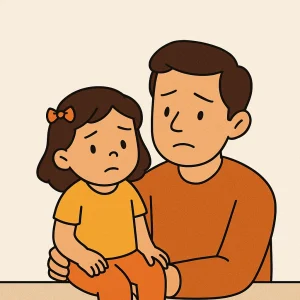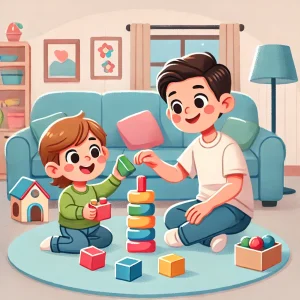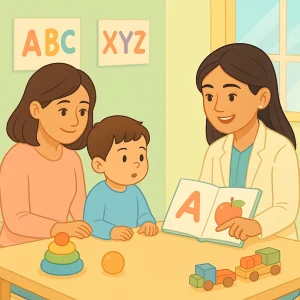Discover the Top Benefits of Speech Therapy for Autism
Last Updated: September 26, 2024
Autism Spectrum Disorder (ASD) affects how children communicate and engage with the world, making it difficult for parents to see their child face such challenges. From trouble with eye contact to speaking in a monotone or not speaking at all, these communication barriers can hinder social connections. Early intervention through speech therapy is key to addressing these issues. By focusing on improving communication skills, speech therapy helps children express themselves better, fostering stronger relationships and social development. Discover how early speech therapy can make a transformative difference for children with autism and their families.
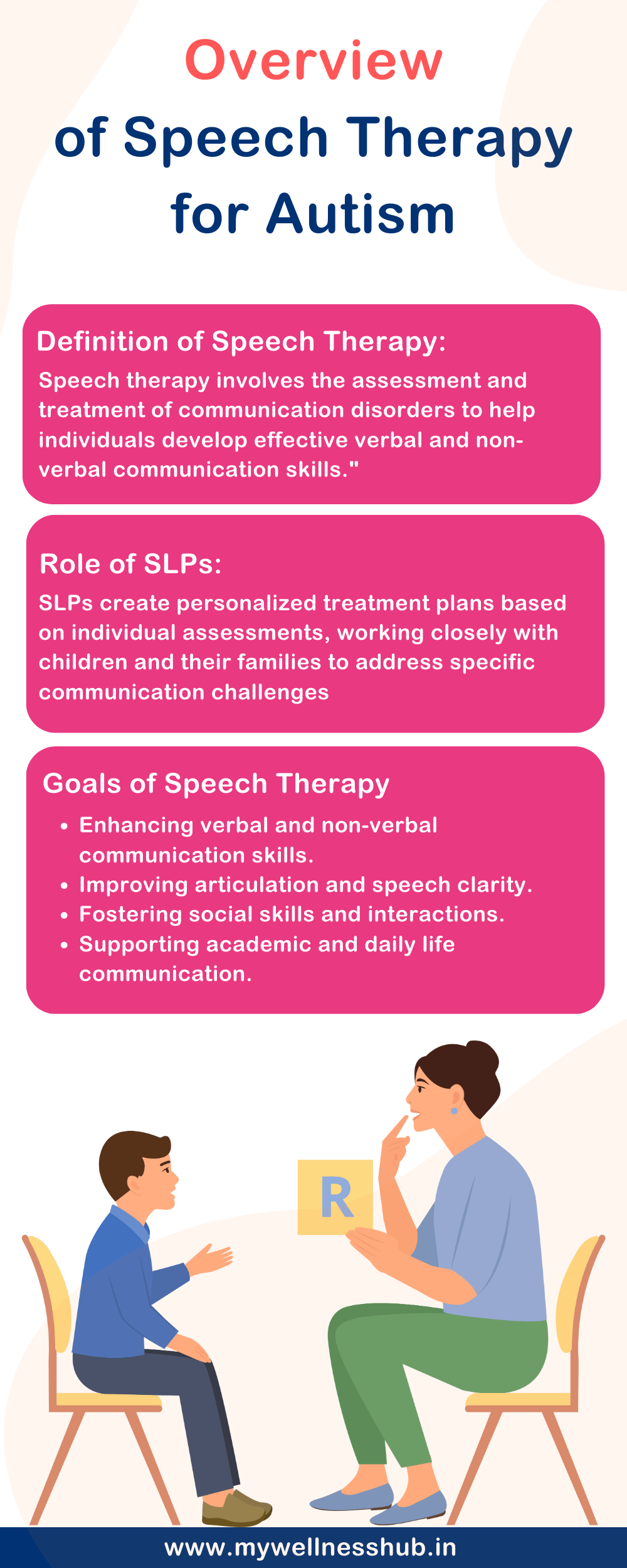
Understanding Autism and Communication Challenges
Children with Autism Spectrum Disorder (ASD) often face unique communication challenges that can impact their ability to interact and connect with others. These difficulties can manifest in various ways, making it essential for parents and caregivers to recognize and understand these signs early on.
Communication Difficulties in Autism
- Non-Verbal Communication: Many children with autism do not use spoken language to communicate. Instead, they might rely on gestures, facial expressions, or visual aids. This can make it challenging for them to express their needs and understand others, leading to frustration and social isolation.
- Monotone Speech: For children who do speak, their speech might lack variation in pitch and intonation, making it sound monotone. This can make it hard for listeners to understand the emotional context of what is being said, complicating social interactions.
- Difficulty Understanding Social Cues: Children with autism often have trouble interpreting social cues like body language, facial expressions, and tone of voice. This can lead to misunderstandings and make it difficult for them to form meaningful relationships. For example, they might not recognize when someone is joking or understand personal space.
- Echolalia: Echolalia is when children with autism repeat words or phrases they have heard before. While it might seem like mimicking, it can be a way for them to process and understand language. However, it can also hinder the development of spontaneous and functional speech.
Comparison of Communication Challenges and Solutions
| Communication Challenge | Speech Therapy Solution |
|---|---|
| Non-verbal communication | Use of AAC systems: Augmentative and alternative communication (AAC) systems, such as speech-generating devices and communication boards, help children express their needs and thoughts. PECS (Picture Exchange Communication System): This system enables children to communicate by exchanging pictures for desired items or activities. Visual supports: Using visual aids like charts, pictures, and symbols to facilitate understanding and expression. |
| Monotone speech | Techniques to vary intonation: Teaching children to use different pitches and tones in their speech to convey emotions and emphasis. Expression exercises: Activities that encourage the use of facial expressions and body language to match vocal intonation. |
| Difficulty understanding cues | Training to recognize social cues: Teaching children to understand body language, facial expressions, and gestures. Social stories: Using short stories to illustrate social situations and appropriate responses. Role-playing: Practicing social interactions through role-playing scenarios to improve understanding and response to social cues. |
| Echolalia | Strategies to move beyond echolalia: Guiding children to use language meaningfully rather than repeating words or phrases. Functional speech exercises: Encouraging the use of spontaneous and context-appropriate speech. Modeling and prompting: Demonstrating and prompting correct language use during conversations. |
What is Speech Therapy?
Speech therapy is a specialized field focused on diagnosing and treating communication and swallowing disorders in both children and adults. This therapy is administered by professionals known as Speech-Language Pathologists (SLPs), who are trained to help individuals develop effective communication skills.
The Role of Speech-Language Pathologists (SLPs)
SLPs are experts with advanced degrees and clinical experience in speech and language development. Their primary role is to assess, diagnose, and treat communication disorders. For children with autism, SLPs play a crucial part in helping them overcome various communication challenges. They work closely with the child, their family, and other professionals to create a tailored therapy plan that addresses the child’s specific needs.
Goals of Speech Therapy for Children with Autism
Speech therapy for children with autism aims to improve their ability to communicate effectively. Here are the primary goals:
- Enhancing Verbal and Non-Verbal Communication
- Teaching children to use words, gestures, and other non-verbal cues to express themselves.
- Helping them understand and interpret the communication cues of others.
- Improving Social Interaction Skills
- Enabling children to engage in conversations, make eye contact, and understand social norms.
- Providing strategies to initiate and maintain social interactions.
- Developing Functional Communication
- Moving beyond echolalia to meaningful and spontaneous speech.
- Introducing augmentative and alternative communication (AAC) systems when necessary.
- Building Expressive and Receptive Language Skills
- Assisting children in constructing sentences, using correct grammar, and expanding their vocabulary.
- Helping them comprehend spoken language and follow instructions.
- Addressing Speech Fluency Issues
- Teaching techniques to reduce stuttering and improve the smoothness of speech.
- Helping children gain confidence in their ability to speak fluently.
- Strengthening Articulation and Pronunciation
- Providing exercises to improve the clarity of speech sounds.
- Teaching the correct placement of the tongue, lips, and jaw to produce clear speech.
Speech therapy is not a one-size-fits-all approach. Each child’s therapy plan is customized to address their unique strengths and challenges, ensuring they receive the most effective support possible.
Key Benefits of Speech Therapy for Autism
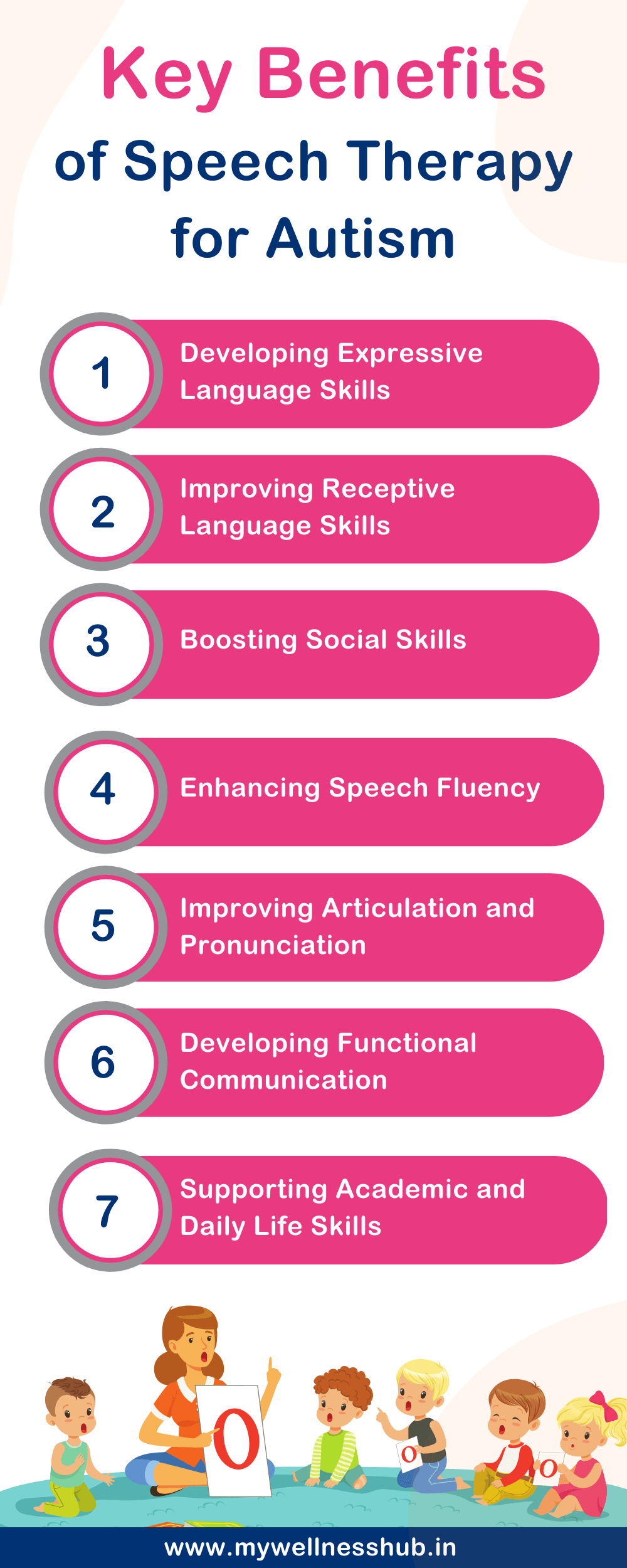
Developing Expressive Language Skills
One of the primary goals of speech therapy for children with autism is to enhance their verbal and non-verbal communication skills. This includes:
- Enhancing Verbal and Non-Verbal Communication: Children learn to use words, gestures, and facial expressions to express their thoughts and feelings. For example, they might be taught to point to objects they want or nod to indicate agreement.
- Helping Children Express Their Wants and Needs: Speech therapy helps children articulate their desires, whether it’s asking for a toy or expressing hunger. This reduces frustration and promotes independence.
- Improving the Ability to Initiate and Maintain Conversations: Children learn how to start conversations and keep them going, which is crucial for forming relationships and engaging with others.
Improving Receptive Language Skills
Understanding what others are saying is just as important as being able to speak. Speech therapy focuses on:
- Teaching Children to Understand What is Being Said to Them: Through various exercises, children learn to comprehend spoken language better, making it easier for them to follow instructions and participate in conversations.
- Recognizing and Interpreting Verbal and Non-Verbal Cues: Children are taught to understand social cues, like tone of voice and body language. This helps them respond correctly in different situations.
Boosting Social Skills
Social Interactions and Speech Therapy
Social interactions can be particularly challenging for children with autism. Speech therapy aims to help with this by:
- Learning to Interact with Peers and Form Friendships: Therapy sessions often include group activities that teach children how to engage with others, share, and take turns.
- Understanding Social Rules: Children learn essential social rules, such as making eye contact, waiting for their turn to speak, and understanding personal space.
Enhancing Speech Fluency
Fluency issues like stuttering can hinder communication. Speech therapy addresses these challenges by:
- Addressing Speech Issues: Therapists help children with speech issues like stuttering and cluttering by using techniques to improve smooth speaking and reduce disruptions.
- Techniques to Help Children Speak More Smoothly and Effortlessly: This includes practicing controlled breathing, slowing down speech, and using rhythmic patterns.
Improving Articulation and Pronunciation
Clear speech is essential for effective communication. Speech therapy focuses on:
- Teaching Children How to Produce Sounds and Words Correctly: Children learn the correct placement of their tongue, lips, and jaw to produce specific sounds.
- Strengthening the Muscles Involved in Speech: Through targeted exercises, children improve their muscle strength and coordination, enhancing their ability to articulate words clearly.
Developing Functional Communication
Functional communication goes beyond just speaking; it’s about using language meaningfully. Speech therapy helps by:
- Moving Beyond Echolalia to Meaningful Speech: Children are taught to use language with purpose, not just repeat words or phrases.
- Using Augmentative and Alternative Communication (AAC) Systems: For non-verbal children, AAC systems like picture boards or speech-generating devices are valuable tools for communication.
Supporting Academic and Daily Life Skills
Good communication skills are vital for success in school and everyday life. Speech therapy supports:
- Helping Children Follow Instructions and Understand Academic Content: Improved language skills enable children to better understand their teachers and engage with the curriculum.
- Improving Overall Communication for Daily Life: Better communication skills help children in their daily interactions, such as playing with peers and joining family activities.
Role of Speech-Language Pathologists (SLPs)
Speech-Language Pathologists (SLPs) play a critical role in the development and implementation of speech therapy for children with autism. Their expertise helps create individualized treatment plans that address each child’s unique needs.
1. Assessment and Individualized Treatment Plans
The first step in speech therapy is a thorough assessment conducted by an SLP. This assessment may include standardized tests, informal observations, and detailed interviews with parents or caregivers. The goal is to understand the child’s current communication abilities and challenges.
Based on the assessment, SLPs develop individualized treatment plans tailored to the child’s specific needs. These plans outline the goals of therapy, the methods to be used, and the expected outcomes. They are designed to target areas such as expressive and receptive language skills, speech fluency, articulation, and social communication.
2. Collaborative Approach Involving Parents and Caregivers
SLPs recognize the importance of involving parents and caregivers in the therapy process. A collaborative approach ensures that the child receives consistent support both during and outside therapy sessions. SLPs provide guidance and training to parents, helping them reinforce therapy techniques at home. This collaboration can significantly enhance the child’s progress and make therapy more effective.
Parents and caregivers are encouraged to observe therapy sessions, ask questions, and provide feedback. They play an active role in setting goals and adapting strategies to fit their child’s needs. This ongoing communication between the SLP and the family creates a supportive environment that fosters the child’s development.
3. Importance of Family-Centered Therapy for Consistent Progress
Family-centered therapy is crucial for achieving consistent progress in speech therapy. When families are actively involved, children are more likely to practice and apply the skills they learn in therapy to their daily lives. This continuity helps reinforce new communication skills and makes them more natural and functional.
Moreover, family-centered therapy recognizes that each family has unique dynamics and needs. SLPs work with families to integrate therapy into their routines, making it more manageable and sustainable. This personalized approach ensures that therapy is not just limited to sessions with the SLP but becomes a part of the child’s everyday interactions.
Techniques Used in Speech Therapy for Autism
Speech therapy for children with autism employs various techniques to address communication challenges and enhance their ability to interact with others. These techniques are tailored to each child’s unique needs, ensuring the most effective support. Here are some of the key techniques used:
1. Visual Supports and Gestures
Visual supports, such as pictures, charts, and symbols, play a crucial role in helping children with autism understand and use language. These tools provide visual cues that can make abstract concepts more concrete and easier to grasp. Gestures, including pointing and hand movements, are also used to reinforce verbal communication. By combining visual aids with spoken words, children can better comprehend and retain information.
2. PECS (Picture Exchange Communication System) and Other AAC Systems
The Picture Exchange Communication System (PECS) is an augmentative and alternative communication (AAC) system designed to help children with autism communicate their needs and desires. In PECS, children learn to exchange pictures of objects or actions for the actual items or activities they represent. This system encourages spontaneous communication and can be a stepping stone to developing verbal language.
3. Exercises for Muscle Strength and Coordination
Speech production involves the coordination of various muscles in the mouth, jaw, and throat. Speech therapy includes exercises to strengthen these muscles, improving articulation and clarity of speech. Techniques might involve practicing specific sounds, blowing activities to enhance breath control, and using tools like straws and whistles to build oral motor skills.
4. Interactive Activities to Encourage Eye Contact and Social Engagement
Social engagement and eye contact are often challenging for children with autism. Speech therapists use interactive activities to foster these skills in a fun and engaging way. Games that require turn-taking, role-playing scenarios, and group activities are designed to teach children how to interact with others, maintain eye contact, and understand social cues. These activities help children build confidence in their social interactions and improve their ability to connect with peers.
Speech Therapy Techniques and Their Benefits
| Technique | Benefit |
|---|---|
| Visual Supports and Gestures | Enhances understanding and communication: Visual supports, such as pictures, charts, and symbols, help children with autism comprehend and use language more effectively. Gestures reinforce spoken words and aid in conveying meaning, making it easier for children to understand and express themselves. |
| PECS and AAC Systems | Facilitates non-verbal communication: The Picture Exchange Communication System (PECS) and other augmentative and alternative communication (AAC) systems enable non-verbal children to communicate their needs and thoughts. These tools provide alternative ways to express themselves, reducing frustration and enhancing interaction. |
| Exercises for Muscle Strength | Improves articulation and speech clarity: Speech production involves the coordination of various muscles in the mouth, jaw, and throat. Exercises that strengthen these muscles help children produce clearer speech sounds, improving their overall articulation and speech clarity. Techniques may include practicing specific sounds, breath control activities, and using tools like straws and whistles. |
| Interactive Activities | Encourages social interaction and engagement: Activities such as games, role-playing, and group exercises foster social skills and engagement. These interactive methods help children practice eye contact, turn-taking, and understanding social cues in a fun and supportive environment, boosting their confidence in social interactions. |
Conclusion
Speech therapy plays a transformative role in helping children with autism enhance their communication and social skills. It boosts expressive and receptive language, improves fluency, and strengthens articulation. Techniques like visual supports and interactive activities drive meaningful progress in a child’s everyday interactions. Early intervention is key to unlocking the full potential of speech therapy for autism.
At Wellness Hub, our expert speech therapists are committed to providing personalized, online therapy that empowers your child to thrive. Start early and give your child the tools to succeed. Visit Wellness Hub today for more information and a free consultation!
Frequently Asked Questions:
1. What is speech therapy for autism?
Speech therapy for autism focuses on improving communication skills in children with Autism Spectrum Disorder (ASD). This includes developing both verbal and non-verbal communication, enhancing social skills, and addressing speech fluency issues.
2. How does speech therapy benefit children with autism?
Speech therapy helps children with autism by improving their ability to express their wants and needs, understand what is being said to them, and engage in social interactions. It also enhances speech fluency, articulation, and overall communication skills, which are essential for daily functioning and academic success.
3. What are the key techniques used in speech therapy for autism?
Key techniques include visual supports and gestures, the Picture Exchange Communication System (PECS) and other AAC systems, exercises for muscle strength and coordination, and interactive activities to encourage eye contact and social engagement.
4. Why is early intervention important in speech therapy for autism?
Early intervention is crucial because it maximizes the benefits of speech therapy. The earlier a child with autism starts therapy, the better their chances of developing essential communication skills that will support their growth and independence.
5. How do Speech-Language Pathologists (SLPs) create individualized treatment plans?
SLPs begin with a thorough assessment of the child’s communication abilities and challenges. Based on this assessment, they develop personalized treatment plans that target specific areas of need, using techniques tailored to the child’s unique strengths and weaknesses.
6. How can parents and caregivers support speech therapy at home?
Parents and caregivers can support speech therapy by reinforcing the techniques and exercises provided by the SLP at home. This includes practicing communication skills, using visual supports, and engaging in interactive activities that promote social engagement.
7. What is the role of family-centered therapy in speech therapy for autism?
Family-centered therapy involves the active participation of parents and caregivers in the therapy process. This collaborative approach ensures consistent support and helps integrate therapy into the child’s daily routine, enhancing the effectiveness of the treatment.
8. Can non-verbal children with autism benefit from speech therapy?
Yes, non-verbal children can benefit greatly from speech therapy. SLPs can introduce augmentative and alternative communication (AAC) systems, such as picture boards or speech-generating devices, to help these children communicate effectively.
9. What are augmentative and alternative communication (AAC) systems?
AAC systems are tools used to support or replace spoken language for individuals with communication difficulties. These systems include picture boards, communication apps, and speech-generating devices that help children with autism express themselves and interact with others.
10. How can I find a qualified Speech-Language Pathologist (SLP) for my child?
You can find qualified SLPs through professional organizations, such as the American Speech-Language-Hearing Association (ASHA), or by seeking referrals from your child’s pediatrician. Wellness Hub also offers expert speech therapy services tailored to meet the needs of children with autism.
About the Author:
Anuradha Karanam
Speech-language pathologist (7+ years of experience)
Anuradha Karanam is a skilled speech-language pathologist with over 6 years of experience. Fluent in Tamil, Telugu, Hindi, and English, she specializes in parent counseling, speech sound disorders, fluency assessment, and speech-language evaluations. Anuradha excels at working with children with developmental disorders, offering creative and effective therapy programs. Currently, at Wellness Hub, she holds a BASLP degree and is registered with the RCI (CRR No A85500). Her patience, ambition, and dedication make her a trusted expert in her field.
Book your Free Consultation Today
Parent/Caregiver Info:
Client’s Details:
* Error Message







